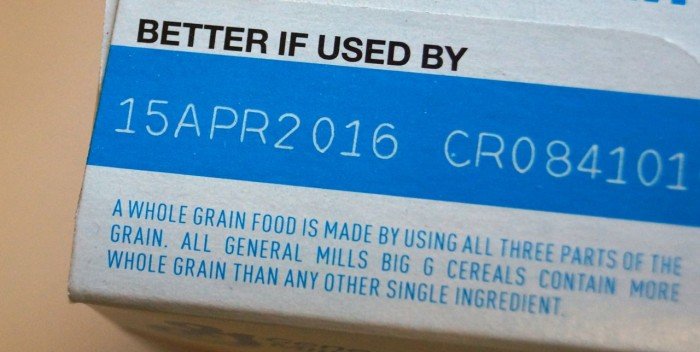Congress Introduces a New Food Date Labeling Act: What Do You Need to Know?
Did you know that expiration dates - and food date labels in general - are not federally regulated in the United States?
With no federal regulations in place, the oversight of these date labels, their meanings, and their particular formatting are actually left up to the discretion of each individual state (*one exception is infant formula - which has labels that are federally regulated).
In Montana and Kentucky, for example, dairy products are not permitted to be sold or donated after their “Sell-by” date.
The language on these labels can be quite vague, some examples might include:
BEST BY MAY 20 2030
USE BY JAN 7 2013
BEST BEFORE OCT 4 2025
SEP 3 2030 (w/ no language)
SELL BY FEB 12 2036
But what exactly does the language on each of these labels mean? Is food unsafe for consumption after these dates?
Do any of these dates simply mean that the food in question may be lower in quality after the printed date?
Unfortunately, the answer to these questions aren’t always clear.
According to Andrea Collins, Senior Specialist of Sustainable Food Systems for the National Resources Defense Council, nearly 20% of household food waste may be due to confusion over these dates and what they actually mean.
Not only is that food itself wasted, but also the resources that went into producing it along the way. Dairy products, for example, are extremely resource-intensive; When these types of products are wasted, the level of waste is magnified.
Luckily - the new Food Date Labeling Act (FDLA), introduced by Congress in 2023, aims to fix the vagueness surrounding food labeling by standardizing these labels at a federal level - overriding any current state regulations. By doing so, the FDLA has the potential to both reduce food waste (due to confusion over date labels), and more clearly educate consumers on what these labels actually mean.
The main goal of the FDLA would be to create two categories of food labels: those meant to provide information about the food’s safety for consumption, and those meant to give information about its quality.
- “BEST IF USED BY + date” would be the language used to indicate that after the printed date, the item’s quality may be compromised, but it is still perfectly safe to consume.
- “USE BY + date” indicates that after the printed date, the food item would no longer be safe for consumption.
The FDLA would also encourage manufacturers to use “FREEZE BY” labels when applicable - this label would indicate that as long as an item is frozen by a particular date, and kept frozen, it will remain safe for consumption. Additionally, with state guidelines being overridden, the FDLA would allow businesses to sell or donate items that may be past their printed quality dates.
Implementing these new standards would go a long way in terms of educating consumers and the food industry regarding when a label is actually a matter of safety - as things currently stand, many date labels have no correlation to the safety of the food product. Unfortunately, the average consumer has not been made explicitly aware of this fact - leading to perfectly safe food being thrown out due to an unfounded fear of getting sick.
At home, this type of “domestic harmony” issue can contribute greatly to household food waste - as members of a household may disagree or have different levels of knowledge regarding date labels and their different meanings.
Source: ReFed
Thankfully, another component of the Food Date Labeling Act would call upon the USDA (United States Department of Agriculture) and FDA (Food and Drug Administration) to lead initiatives that would educate manufacturers, food industry workers, and consumers about the different meanings of these labels.
Tori Oto, with Harvard Food Law and Policy Clinic, notes that the FDLA can be understood as a “common sense” solution that’s aimed at getting the date labeling system more in-line with the way consumers actually behave.
Studies conducted by both Walmart and The Food Policy Law Clinic showed that many consumers already associated the phrase “Use by” with food safety, which helped to inform the drafting of the Food Date Labeling Act.
In short, the Food Date Labeling Act introduced by Congress would have an immediate and significant impact on both food waste and consumer education. Currently, confusion over the meaning of food date labels causes perfectly edible food to be thrown out; certain states’ regulations also render many food products unable to be sold or donated, which leads to that food ultimately being wasted.
The FDLA would make it clear which labels indicated a drop in quality after a printed date vs. those that may communicate whether or not a product is unsafe for consumption. The act would also be supported by an educational campaign, headed by both the FDA and USDA.
This landmark legislation, while quite simple, would have a profound impact on the amount of food wasted across households in the United States. By simplifying the date categories/types down to just two - quality and safety - food can have a much longer shelf life both in stores and in people’s homes.


